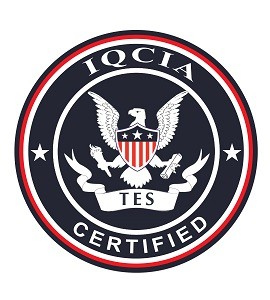Tank Entry Supervisor
IQC TES Course Syllabus 2023
Introduction
SMART Entry Exam
The purpose of the entry exam is to establish current knowledge base of each candidate.
The entry exam score and SMART points are calculated in the candidates final grade point average.
The SMART TES entry exam identifies any misinformation, plus the strong and weak sections of each candidate.
- The IQC TES Course and Certification is divided in 4 major sections:
- First Section Law Code of Federal Regulations. (ACGIH, NFPA, EPA)
- Second Section API Recommended Practices
- Third Section IQCIA Recommended Guidelines
- Fourth Section Practical and Field Applications
Section 1
Code of Federal Regulations
- CFR 1910.38 Employee Emergency Plans and Fire Prevention Plans
- CFR 1910.132-138 Subpart I – Personal Protective Equipment
- CFR 1910.146 Permit-Required Confined Spaces
- CFR 1910.147 Control of Hazardous Energy (Lockout/Tag out)
- CFR 1910.1000 (and following) Subpart Z “Toxic and Hazardous Substances”
- CFR 1910.1200 Hazard Communication
- CFR 1926.400-.449 Subpart K – Electrical
- OSHA 3007 Ground-Fault Protection on Construction Sites – 1998 (Revised)
- OSHA 3088 How to Plan for Workplace Emergencies and Evacuations -(Revised)
- OSHA 3151-12R Personal Protective Equipment – Revised 2003
- OSHA 3138-01R Permit-Required Confined Spaces – Revised 2004
- OSHA 3120 Control of Hazardous Energy [Lockout/Tag out] – 2002 (Revised)
- OSHA 3111 Hazard Communication Guidelines for Compliance – 2000
- OSHA 3084 Chemical Hazard Communication – 1998 (Revised)
- OSHA 3075 Controlling Electrical Hazards – 2002 (Revised)
- OSHA 2254 Training Requirements in OSHA Standards and Training Guidelines
- First Section Law Code of Federal Regulations. (ACGIH, NFPA, EPA)
- Review Federal Regulations and Publications
- ACGIH (American Conference of Governmental Industrial Hygienists)
Publication Threshold Limit Values (TLVs) for Chemical Substances and Physical Agents In the Work Environment and Biological Exposure Indices.Section 2
API Recommended Practices Review
- API 2015 – Safe Entry and Cleaning of Petroleum Storage Tanks, Planning and
Managing Tank Entry From Decommissioning Through Re-
commissioning.Storage Tanks - API 2026 – Safe Access/Egress Involving Floating Roofs of Storage Tanks in
Petroleum Service (Cribbing with wood) - API Pub. 2207 – Preparing Tank Bottoms for Hot Work
- API Pub. 2219 – Safe Operation of Vacuum Trucks in Petroleum Service
- API 2015 – Safe Entry and Cleaning of Petroleum Storage Tanks, Planning and
- Section 3
- IQCIA Recommended Guidelines
- IQC RG 2020 Attendant, Entrant, Air System Monitor, Entry Supervisor
- IQC RG 2025 Guidelines for Entering and Cleaning Petroleum Storage Tanks
- IQC RG 2021 Pressure Washing and Hydroblasting
- IQC RG 2122 Cribbing and Roof Stabilization Procedures
- IQC RG 2123 Safe Work and Execution Plans
- IQC RG 2124 Risk Assessments and Checklists
- IQC RG 2125 External and Internal Floating Roof Raising
Systems/Procedures - IQC RG 2128 Confined Space Entry Recommended Guidelines
- IQC RG 2026 Ventilation Guidelines Air Exchange versus Circulation
- IQC RG 2143 Bonding versus Grounding, Robots/Cannons and other
equipment - IQC RG 2129 Confined Space Rescue Guidelines Procedures and Plans
- IQC RG 2130 Incident Command Systems
- IQC RG 2101 Calculations and Formulas, Conversion Tables, Checklist and
Forms, Permitting - IQC RG 2110 Pressure washing and Hydroblasting SAFETY
-
Special Projects
- Group Assignments Abnormal Tank Condition Projects Teams of 2-3 candidates each are assigned to a serious tank condition such as collapsed roofs, sunk floating roofs, (SWEP, Cribbing Plan, Job Book)
National Fire Protection Agency
- NFPA 326- Standard for the Safeguarding of Tanks and Containers for
Entry, Cleaning, or Repair - Chapter 4 – Basic Precautions
- Chapter 5 – Preparation for Safeguarding
- Chapter 6 – Testing Procedures
- Chapter 7 – Control or Removal of Vapors
- Chapter 8 – Inspection and Certification of Tanks and Containers
- Chapter 9 – Procedures for Access to and Entry of Tanks
- Chapter 10 – Cleaning Tanks and Containers
Section 4
Presentation Flammable Liquids and Vapors, Combustible Dusts
Flammable Liquids, LEL, EFR, UEL, Combustible Dusts. - Safe Work Plan Development and Execution
- Abnormal Tank Condition Project (SWEP, Cribbing Plan, Job Book)
- Abnormal tank conditions samples: (sunk internal floating roof, collapsing fixed cone roof, raising a collapsed floating roof.)
- Develop Safe Work and Execution Plan for tank project assigned
- Complete JSA/JSC for job steps
- Present plan to group
- Discussions and corrections to SWEP
Review: Formulas, Questions and ClarificationsFinal Exam 4 hours
Final Exam Review
Review of missed questions on final and other questions identified by our SMART Testing will be conducted via telephone one week after course completion.

